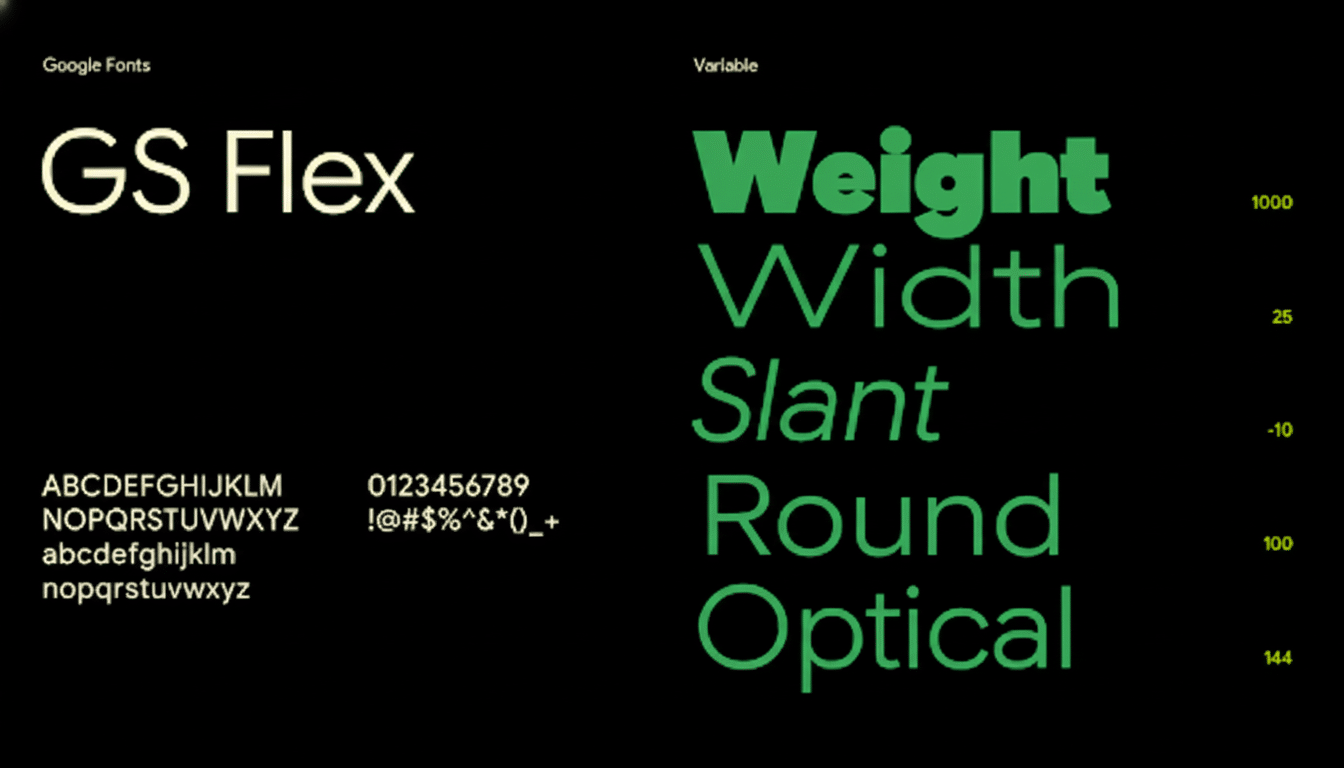Google’s proprietary typeface is leaving the walled garden. Google has released Google Sans Flex, the sans-serif typeface used for much of its brand and marketing material, for anyone to use under the SIL Open Font License on its Google Fonts website — meaning it can be used anywhere that users are able to choose whether they want to view written content with a serif or sans serif font, with few limitations. The addition to the Google Fonts catalog was noticed by industry watchers, and it represents a significant change to which brands get access to their flagship fonts.
What Google Sans Flex Is and Why It Matters
To achieve that ideal, Google Sans Flex is a variable font designed to have range and precision. It has five axes — weight, grade, slant, width, and roundness — which allow designers to tune the same typeface from mood to use case in an unusually wide range. In practice, that means you can jump from compact (and sober) UI labels to friendly and rounder headlines without a full font switch out; consistent but context-sensitive designs.

The grade axis is particularly useful as an interface design feature, since it makes strokes thicker or thinner without changing glyph widths — hence preserving layout but increasing contrast. Slant has print’s grace of subtle emphasis without a conventional italic, and width allows typography to breathe on big canvases or snug up in narrow columns. “Roundness is the thing where you tweak curves in letterforms: It’s going to talk about the adjustability of the brand from a technical standpoint to an approachable standpoint,” he explains.
Understanding the Open Font License and Usage Rights
One of the most popular open licenses in typography is the SIL Open Font License, maintained by SIL International. Released under the OFL, Google Sans Flex is open source and may be used, embedded, and distributed in any way without restrictions for personal or commercial projects. No attribution is required. You can also edit the font if you want to, rename derivatives, and abide by reserved font names. The main restriction is simple: you can’t sell the actual font file, but you are absolutely free to sell products, apps, books, and services that make use of the font.
For teams working through licensing approvals, the OFL’s clarity is a significant benefit. It makes it easier to comply in all media — web, print, broadcast, and app distribution — including embedding the fonts into PDFs and standalone mobile applications where font licensing is often a point of resistance.
Why Variable Fonts Are Important for Teams
Variable fonts are able to save designers’ time by combining multiple styles in one file. They won’t have to worry about font files taking up too much space on their design systems and slowing down page loads due to heavy HTTP requests. Multiple teams ship 4–8 static font files for light through bold weights; a single variable font can replace that range, and with interpolation provide fine-grained control in code or design tools. A variety of axes is supported by contemporary browsers, Android and iOS, as well as Figma and Adobe applications, so we see actual implementation can arrive on different platforms.

More than just performance, variable axes allow your response time to be more intuitive and more engaging. A slight grade bump can make legibility easier in dark mode or on low-contrast screens, without forcing text reflow. Width variation lets you maintain a type hierarchy at all breaks, and slant can be used to add emphasis that reads well in crowded interfaces. These are incremental advantages, but at scale — on a news site or commerce catalog or enterprise dashboard — they add up to cleaner reading and fewer design workarounds.
How Roboto and Open Sans Compare to Google Sans Flex
For any designers using Roboto or Open Sans in the past, you might find Google Sans Flex slightly familiar but also with a twist. Roboto, especially Roboto Flex, is designed to work well in both UI and body text with a large range of axes and broad language support. Open Sans is still the neutral, high-contrast workhorse of longform copy and interfaces. Google Sans Flex also pushes into a friendlier, more brand-forward geometry — particularly when the roundness axis is activated — which makes it an appealing option for display, marketing, and as fitting for rounded product designs as traditional UI.
Where You Might See Google Sans Flex Used Next
With that font in the public catalog, you’re going to see faster adoption across app UIs, marketing sites, and product documentation looking for a contemporary look that jibes well with modern Material Design sensibilities. Since the OFL allows it, teams can use Google Sans Flex as a standard font family across web and native apps, and motion designers are able to animate changes in axes for smooth transitions in video content and interactive experiences.
For intrepid developers and designers, a single source becomes the place to dial in weight, grade, slant, width, and roundness “live” within the variable file itself. Combine it with system-aware theming — e.g., dark mode grade adjustments or width tweaks at particular breakpoints — and the result is a more polished product using fewer resources with less compromise.
Thanks to Google Sans Flex, now everyone has access to one of the tech world’s most distinctive typographic voices — without having to reverse-engineer anything or take a stab in the dark — just a flexible and reliable tool covered by an open license.

